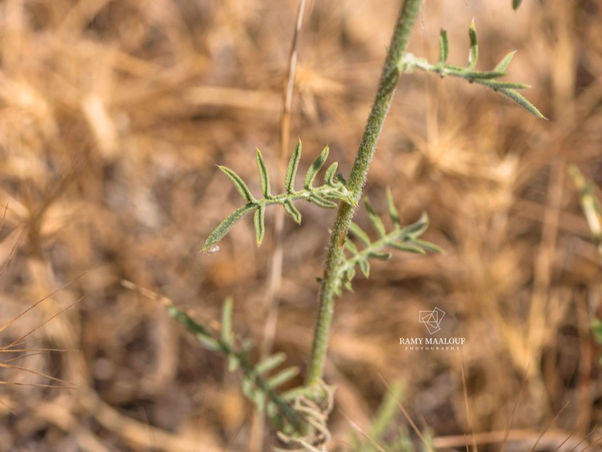Family |
Asteraceae
Centaurea iberica subsp. hermonis
(Boiss.) Bornm.
Leb. Syr.
Centaurea iberica Trev. ex Spreng. subsp. hermonis (Boiss.) Wagenitz
(Nouvelle Flore du Liban et de la Syrie, vol. 3, p. 488; Pl. CCCII nº 1–2; 1983)
Life-form & habit: Erect, much-branched plant, 20–80 cm tall; more or less canescent, particularly in the variety hermonis.
Leaves: Strongly dissected, pinnatisect throughout, including cauline leaves; lobes dentate.
Inflorescence & flowers: Capitula ovate, solitary, sessile or shortly pedunculate, 1–1.5 cm in diameter.
Involucre: Pale, coriaceous bracts with narrowly membranous margins and a short terminal appendage bearing 1–2 pairs of short lateral spines and a strong central spine. Inner bracts scarious, spineless.
Flowers: Rose.
Fruit: Small achenes, striate with pale lines, bearing a short pappus half the length of the achene.
Phenology: Flowers from May to July.
Habitat & elevation: Roadsides, abandoned land, open woodlands.
Lebanese distribution: Met. Qputbé near Hammara; Hermon (lower regions), Rachaya.
Syrian distribution: Hermon (‘Arné, Qala‘at Jendel); A.L. Bloudane, Birket Foukhté; Mm. Slenfé, Jabal Mattai.
Native range: Lebanon, Syria and Hermon. (KEW)









